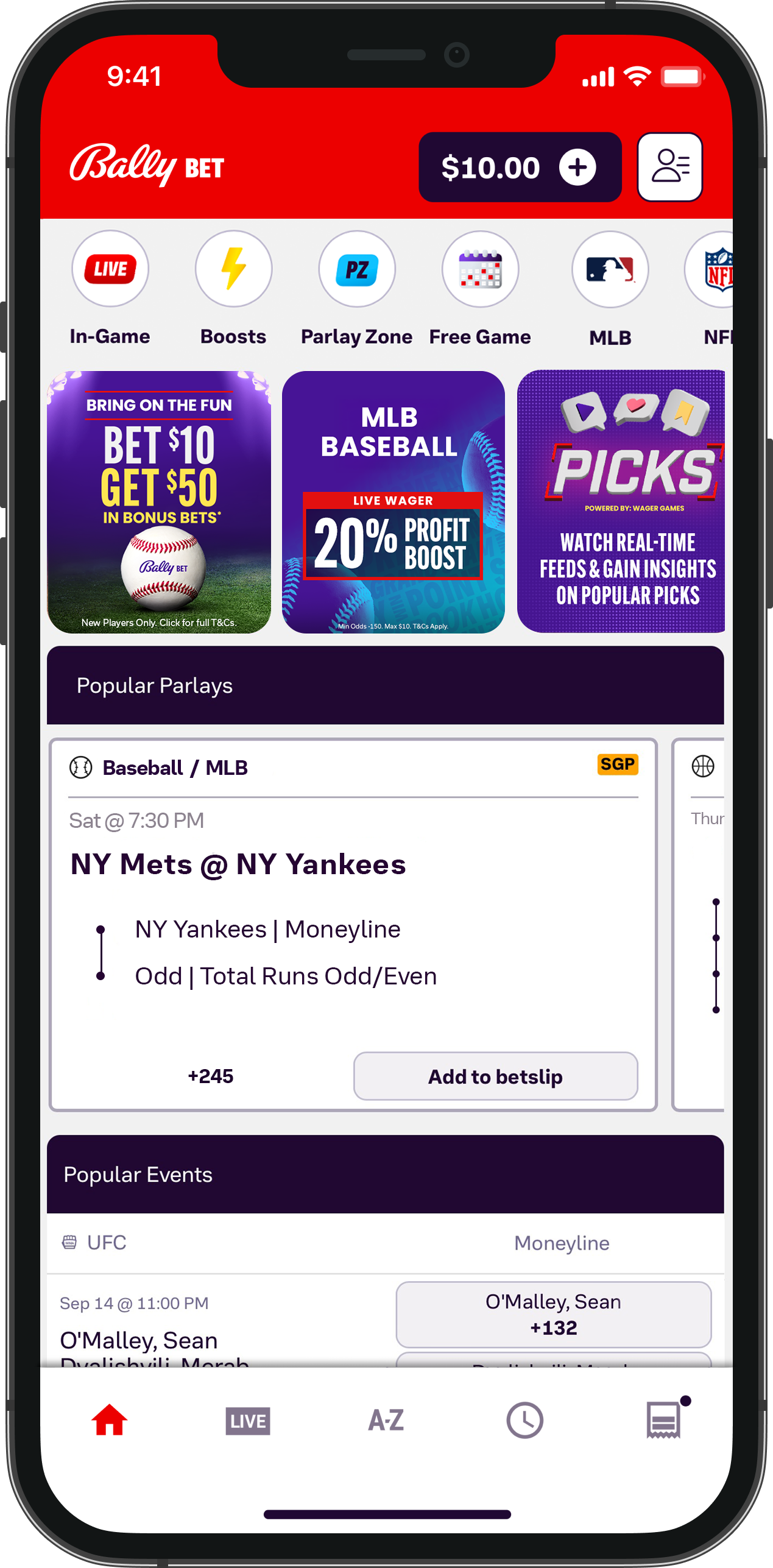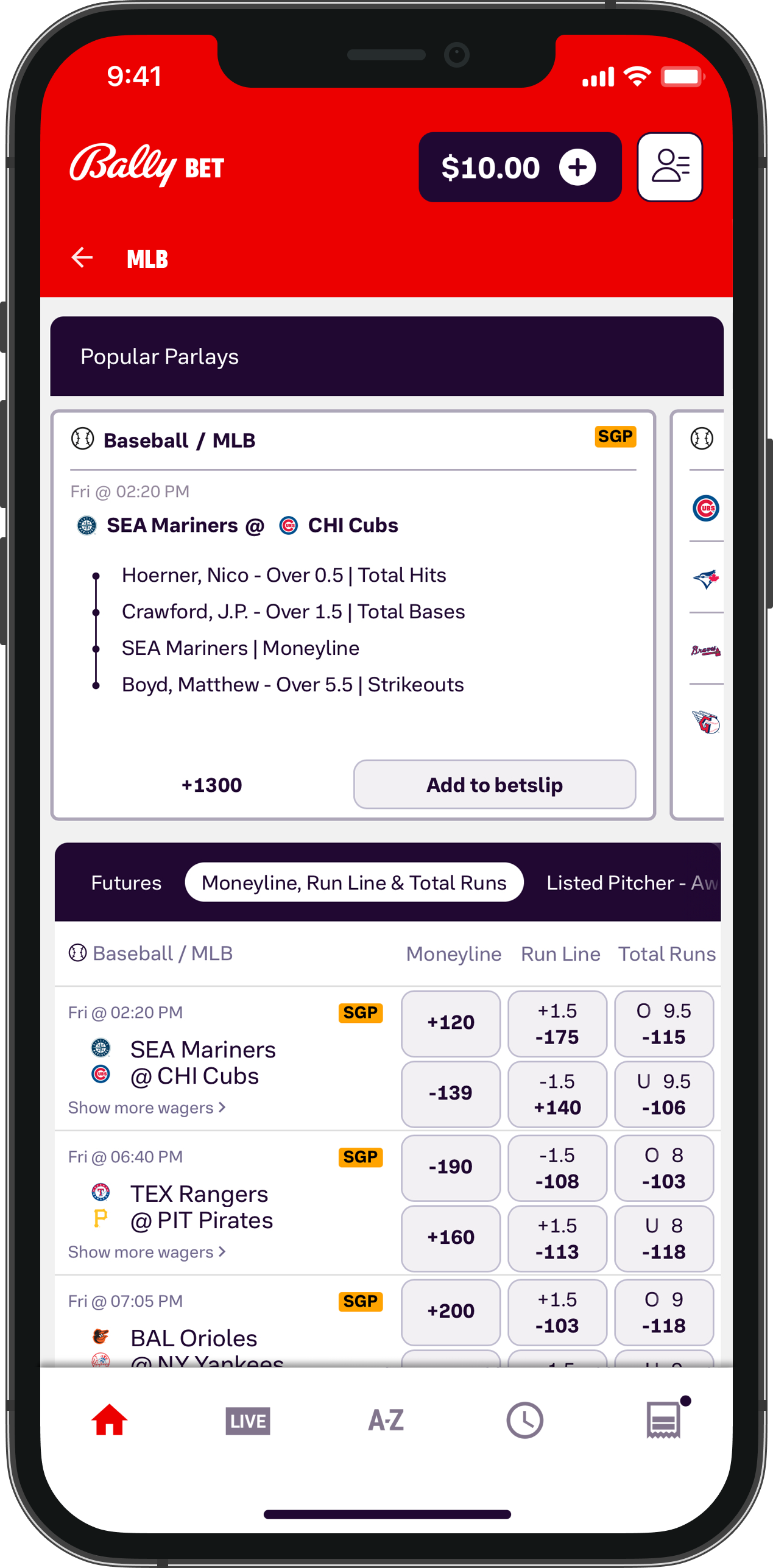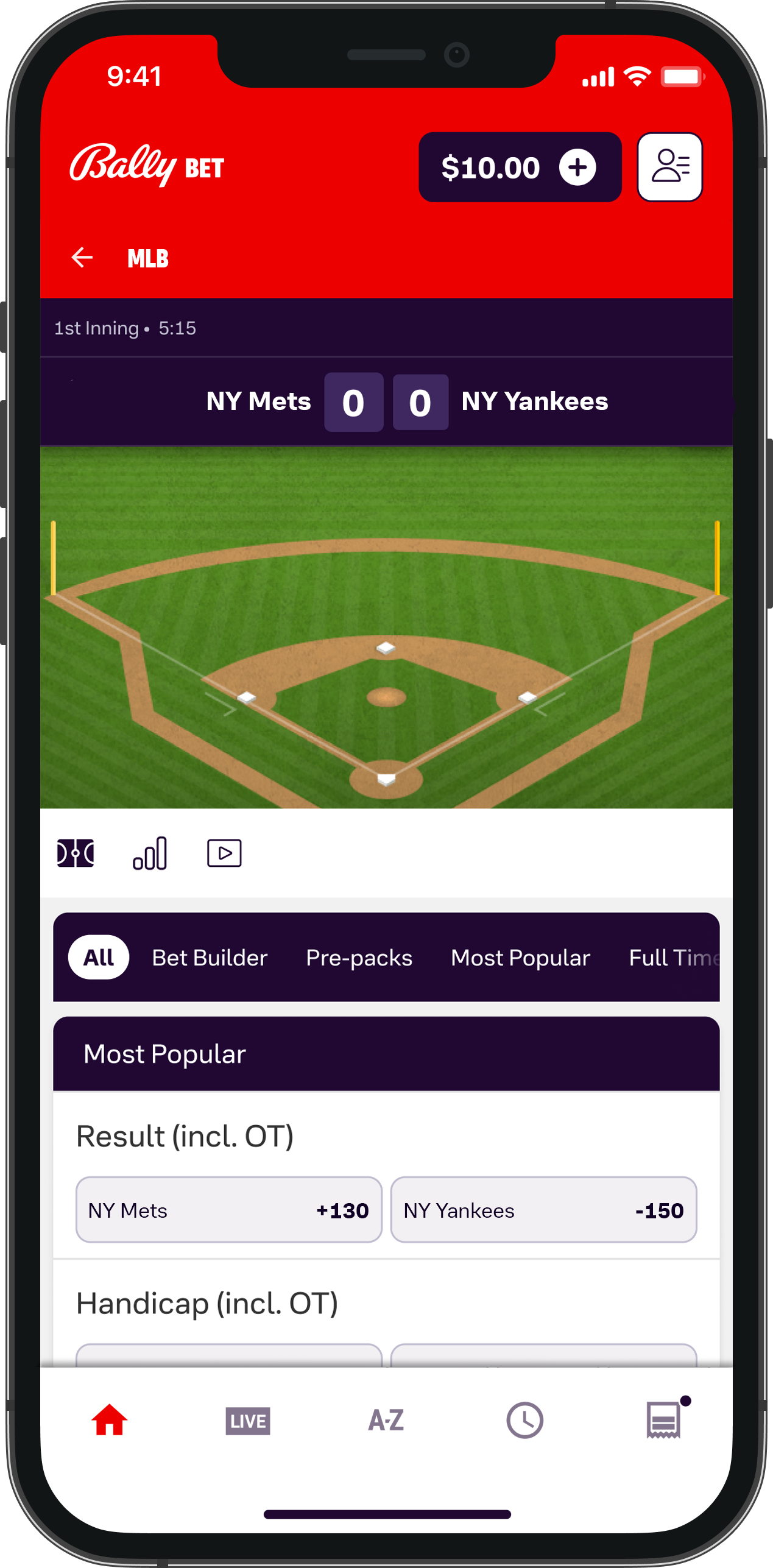College Soccer Betting at Bally Bet Sportsbook
When compared to its college sports cousins, football and basketball, soccer doesn't quite have the same history. It didn't crown its first national champion until 1959.
It's also not nearly as popular as the two main college sports. The top football teams in the country play in front of 100,000 fans each Saturday. The NCAA Basketball Tournament draws more than 650 million viewers for the 67 games. In comparison, the record for average attendance for a college soccer season is held by Saint Louis, with 3,061 soccer fans watching from the stands.
College soccer betting is also often overlooked by many fans of college sports, but the passionate few who do bet on soccer know just how much fun it can be.
You may be one of those college sports bettors who don't know much about NCAA soccer betting. We aim to change that.
Popular Types of College Soccer Bets
Soccer – known internationally as football - is the most popular sport on the globe. Because of that, it is also the most popular sport on which to bet. That benefits those of us who want to bet on college soccer, because all of the many offered bet types are already tried and true.
Three-way Moneyline
Because ties in soccer are common, the moneylines offered in this sport differ from a traditional moneyline. The three-way moneyline available in soccer gives you three possible wagers: Team A to win, Team B to win, or Tie.
All of these wagers come with odds. The favored outcome identifiable by a minus sign (-). If a team is an underdog, or a tie is less likely than a winner emerging, the odds will have a plus sign (+).
American odds are based around a $100 bet, but you can wager any amount. The $100 baseline is how you can read the odds. And when you bet on the underdog, you will win more money than the amount of your original wager. Betting on the favorite will net you less than the amount of your wager. All winning bets pay back your original wager, plus the sum of your winnings.
For example, Clemson is playing Stanford. The odds are Clemson (-125), Stanford (+245), and Tie (+285). Clemson is the big favorite to win, while a tie is considered the least likely outcome, and so it pays the most in potential winnings.
If you were to wager $100 on a successful Clemson, you would win $80 in profit. If you were to wager $100 on Stanford, your potential winnings would be $245. A $100 bet for a Tie could net you $285. If you bet $50 on any of the above bets, you’d win $40 on Clemson, $122.50 on Stanford, and $142.50 on a Tie.
Two-way Moneyline
With a two-way moneyline, you account for all three possibilities of an outcome, Team A win, Team B win, or Tie, but with only two possible bets. Those are Team A wins or ties, and Team B wins or ties. Because this folds in the possibility of a tie into your team bet, the odds pay significantly less.
For example, Oregon State and North Carolina are playing, and the odds on a two-way moneyline have Oregon State to win or tie (-165) and North Carolina to win or tie (-215). As with all American odds, these are based around $100. When the odds are negative, think of it as the amount required to wager if you want to win $100. A bet of $165 on Oregon State would net $100 in profit. For a bet on North Carolina, the wager would need to be $215 to win $100. Conversely, a $100 bet on OSU wins $60.61, and a bet on UNC wins $46.51.
Two-way Moneyline Draw No Bet
This is a two-way moneyline bet that eliminates a tie from a possible outcome. If the game is a tie, or is tied after 90 minutes, it's ruled a push, and all bets are refunded. Otherwise, you are betting simply on Team A to win or Team B to win, and since the tie has been removed from the equation, the odds on the two teams pay less.
For example, if you wanted to place a bet on Notre Dame and West Virginia with a Draw No Bet, the odds on Notre Dame might be -200 and +150 on West Virginia. With a tie as an option, both would be more favorable payouts. But because of the likelihood of a push, the winning odds pay less.
Goal Lines
A goal line in college soccer betting is very much like a puck line in hockey or a point spread in football and basketball. The line represents the number of goals the favorite needs to win by in order for your wager to win.
For example, Indiana University is playing Memphis, and the goal line on the Hoosiers is -0.5. That means that if they tie, a bet on them loses. A bet on Memphis at +0.5 would result in a winning wager, however, should the game end in a draw. For less evenly matched teams you might see the goal line go up to 1.5, 2.5, and even 3.5 in extreme mismatches.
Over/Under
The over/unders in college soccer work similarly to totals and over/unders in other sports. There is a line on total goals scored in the game, and you bet whether you think that total will go over or under the posted total. However, unlike basketball and football, which generally have equal payouts on either side of the line, soccer will have different odds because of the low number of goals scored.
For example, the totals line on Hofstra and Missouri State is 3.5. Betting the over pays +155, while betting the under pays -205. That's because shifting the line by one goal in soccer changes the wager too far in one direction. Shifting the odds is the better way for a sportsbook to get equal bets on both sides of the line.
Parlays
A parlay is simply a combination of any of the other bets offered in college soccer. You can combine multiple games, or multiple wagers on the same game, and place a parlay bet that pays big money. The downside of parlays is that if just one of your wagers loses, the entire parlay does, too.
Prop Bets
Most states have laws against proposition bets on individual college athletes. But you can still place props on teams and games, like placing a simple wager on both teams to score or team with the most corner kicks. There are also available wagers on first team to score, whether a team will win by a shutout, or if a team makes a comeback to win after falling behind.
College Soccer Betting Tips
If you regularly place bets on the MLS or Premier League, you'll notice right away when betting on college soccer the lack of wide-ranging information. It's a very niche section of sports betting, and so it often goes overlooked. Use this is to your advantage.
Highly covered leagues leave little room for error by the sportsbooks. They are experts at setting lines and odds when Manchester City is playing. When San Diego State is playing, however, you can be the expert if you do your homework.
Alternative betting types
The difference between really good college soccer teams and really bad college teams can be quite big. And unlike in other college sports that can adjust for the difference with a large point spread, soccer changes its odds, meaning that moneyline bets are not always worth it.
This is where alternative betting types, like over/unders and team proposition bets, come into play. These are good wagers to focus on when the game is a significant mismatch.
Favorites are favorites for a reason
We love underdog stories, and we like the bigger payouts that come with a winning bet on the underdogs. But, in reality, the favorites are the better team, and they win with far more regularity. This is especially true when it comes time for the NCAA Division I men's and women's soccer tournaments. It's very rare that a heavy underdog can win more than one match, so don't get caught up in the hype.
College Soccer Betting vs. Professional Soccer Betting
The game isn't much different, and the types of bets that you can place vary only a little between betting on college soccer and betting on the pros. One area is live betting, which isn't typically available at the college level, but is very popular when betting on the best soccer leagues in the world.
The big differences lie in talent and skill. The top performers in the world are consistently great, while the best players at NCAA level will make far more mistakes. They will miss shots, make bad passes, and miss easy saves at a much higher rate. As a result, betting at the college level is also less consistent.
There are also far fewer games at college level, and less time for teams to rebound from bad starts to the season.
Yes. While some states do not allow bets to be placed on teams from that particular state, all states where sports betting is legal do allow for betting on college team sports. The other restriction you may encounter is the availability of prop bets on individual college athletes. This restriction, however, does not apply to prop bets on teams and matches.
American odds, also called moneyline odds, are based around a $100 wager. When you see a minus sign (-), that is the favorite, and the odds are telling you how much you would have to bet to win $100. If you see a plus sign (+), that is the underdog, and the odds are telling you how much you could win with a $100 bet.
Of course, you can bet any amount you want. The odds scale in proportion to your wager.
No. Bets on either of the men or women at the Division I level works the same. However, the dominant teams are different. In women's college soccer, no one has come close to the overall dominance of North Carolina. On the men's side, it is much more evenly matched across the country.



